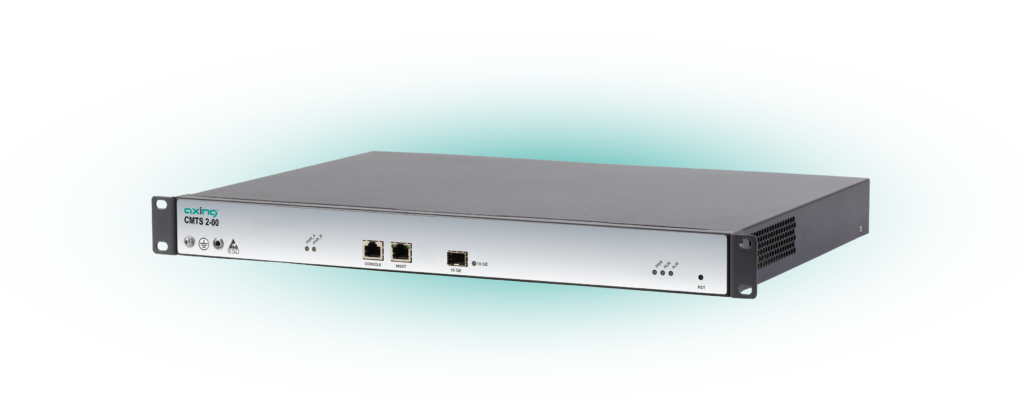
CMTS
Professional feeding of IP services
A Cable Modem Termination System (CMTS) allows the professional feeding of IP services into a coaxial cable network. DOCSIS cable modems then provide Internet access for the users. The term DOCSIS (Data Over Coax Service Interface Specification) may not be familiar to everyone, but the technology behind it is. This is because the same technology is used by the large cable network operators such as Vodafone for their modems and routers. TV and radio are transmitted as usual via the same cable. This means that a powerful Internet distribution system can be set up without new cables and long conversion times. Because there is no need for construction work, there are no new fire protection regulations. This solution is ideal for the hospitality sector, senior residential homes and schools with existing coaxial cable networks.
Benefits at a glance:
-
Use of existing coaxial infrastructure – without structural measures and without new fire protection requirements
-
Stable data rate of up to 1 600 Mbps downstream and up to 240 Mbps upstream
-
Several logical networks and different authorized accesses can be implemented (e.g. for staff, guests, public)
Cable Modem Termination Systems
Accessories
How it works
The CMTS establishes the connection to the Internet backbone for up to 512 modems. The downstream modulator adds the data coming from the Internet onto one or more carriers and sends the data to the cable modem. The upstream demodulator receives the data sent from the cable modem to the CMTS. Upstreams and downstream are merged or separated for the distribution network via a diplexer. The CMTS translates between the IP and DOCSIS protocols and controls the data traffic and quality of service (QoS).
DOCSIS2.0 or DOCSIS3.0 modems are supplied via downstream and upstream channels. Such cable modems then provide access points for Internet and data services via Ethernet and WiFi. High-performance WiFi access points, switches and other network technology can also be connected to such a modem. This ensures optimum coverage.
NMS PRIME – A strong partner for even more possibilities
In large networks, the reliability of Internet supply is particularly important. With NMS Prime we provide a powerful monitoring tool that extends the rudimentary administration capabilities of CMTS. This solution guarantees secure and trouble-free operation and offers even more advantages:
-
Enables remote access through Axing for faster troubleshooting
-
Targeted activation and deactivation of end devices
-
Quality analyses and monitoring of the Internet connection
-
High flexibility: NMS Prime can run on its own server or conveniently and maintenance-free as a cloud solution
-
Monitoring of the coaxial network
Is your cable network return path compatible?
A conventional television distribution system works in only one signal direction, e.g. from the antenna to the television set. For a data network, however, communication must be possible in both directions. EoC technology uses the frequency range of 5…65 MHz in coaxial cable as return path. In modern networks this range is already provided for services with return channel. For communication between 2 modems, the components involved must be return path compatible. Splitter and antenna socket are usually suitable for the return path. You can often check this out by looking at the type plate; the frequency specifications start at 5 MHz. For antenna sockets, a type or model number is printed on the installed part behind the cover. This allows the exact frequency range to be determined if you consult the manufacturer. All antenna outlet sockets with DATA port are suitable for return path.
If a signal amplifier is installed between the modems, it must have a passive return path, otherwise it will probably have to be replaced. If you use EoC in a SAT distribution with a multiswitch, the terrestrial input of the multiswitch should be passive and support the frequency range of 5…65 MHz.
Note: The data services of the cable network operators also use the return path frequency range for Internet and telephony. If you get Internet access or cable tv like this, the house network must be isolated from the public network. The operating manuals of the EoC modems also contain examples of this.
Further information:









